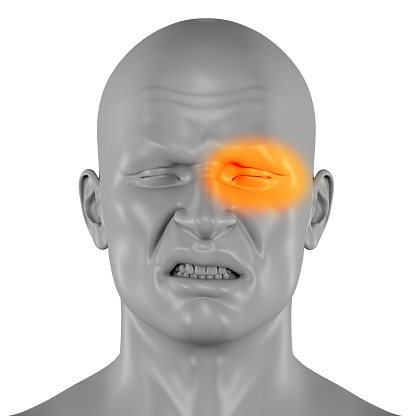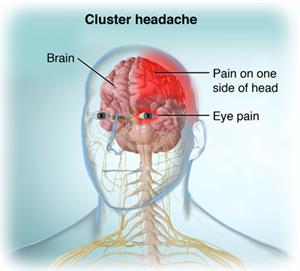

Cluster headaches come in clusters of several weeks and are one of the more severe types. Cluster headache is severe enough to wake the patient from night sleep.
It is usually one-sided, around the eyes and a recessing pain. After the cluster period with frequent attacks, the recovery period comes, but the recovery process may take weeks, months and even years.
Cluster headache is a severe headache that is not life-threatening, rarely seen, but impairs quality of life.
With effective treatment, the duration of cluster headache attacks can be shortened and the pain can become a little more bearable. In addition, medications can reduce the duration and number of cluster headache episodes.

What Causes Cluster Headaches?
The exact cause of cluster headaches is unknown, but abnormalities in the body's biological clock (hypothalamus) are thought to play a role in cluster headaches.
Unlike migraines and tension-type headaches, cluster headaches are not usually associated with triggers such as foods, hormonal changes, or stress.
When a cluster period begins, alcohol use can trigger a headache. For this reason, many people with cluster headaches avoid alcohol during the cluster period. Another possible trigger is drugs containing nitroglycerin used to treat heart disease.
Risk factors
Risk factors for cluster headaches include:
Gender
It is more common in men.
Age
It can develop at any age, but cluster headaches are more common between the ages of 20-50.
Cigaret
Many people with cluster headaches are smokers. However, quitting smoking is generally ineffective on headaches.
Alcohol Use
Alcohol can trigger attacks.
Family History
Having a parent or sibling with cluster headache increases a person's risk of cluster headache.
Cluster Headache Symptoms
It usually starts without any warning. Among the most common symptoms are; Eyelid drooping, swelling around the eyes, pale or redness of the face, unilateral pain and nasal congestion on the affected side, runny nose, feeling of restlessness, severe pain in the face, head, neck and even shoulder in some cases, excruciating, severe pain, often in one eye. It starts around. The pain can sometimes radiate to the face, head, neck, shoulders, and other areas.
People with cluster headaches, unlike those with migraine, sway back and forth because of the pain, or feel the need to get up and walk, instead of lying down or sitting.
Cluster Period Features
A cluster period usually lasts 6-12 weeks. The duration of each cluster period and the seasons in which the attacks begin are often consistent. Most people have episodic cluster headaches. In episodic cluster headaches, there are periods of improvement lasting more than one month between attacks in a year. There is a period of pain-free (remission) until another episode of cluster headache develops. In the chronic cluster, pain-free periods last less than a month in a year. The patient constantly suffers from pain.
In a cluster period:
Headache usually comes in attacks every day, sometimes many times a day.
A single attack can last from 15 minutes to three hours.
Attacks tend to occur at the same time each day.
Most attacks occur during sleep, usually after an hour or two, at night. It wakes the patient from sleep.
The pain begins rapidly and ends abruptly as it begins to decrease in intensity. After an attack, most people are painless but feel exhausted and exhausted.

When Should You See a Neurologist?
If you are experiencing cluster-type headaches, you should contact a neurologist to rule out other possible causes of pain and find the most effective treatment. Cluster headache, even if the pain is very severe, is not usually seen as a result of an underlying disease.
Sometimes, however, severe headaches can be caused by a number of serious underlying medical conditions, such as a ruptured blood vessel (rupture of an aneurysm) or a brain tumor.
If you are a headache sufferer, if you experience a sudden onset and unfamiliar type of headache, you should definitely consult a neurologist.
You should go to the emergency room if you have these signs and symptoms:
Sudden, severe onset headache (thunderclap headache),
high fever, nausea or vomiting, neck stiffness, confusion, seizures, numbness or speech difficulties,
If the headache gets worse, especially after a fall or a head injury
Cluster Headache Treatment
There is no treatment that can cure cluster headache completely. The aim of the treatment is to reduce the severity of the pain, shorten the duration of the headache and prevent the attacks. In a cluster headache, the pain comes on suddenly and subsides in a short time. Therefore, fast-acting drugs are required. Some rapidly-acting medications can provide pain relief.